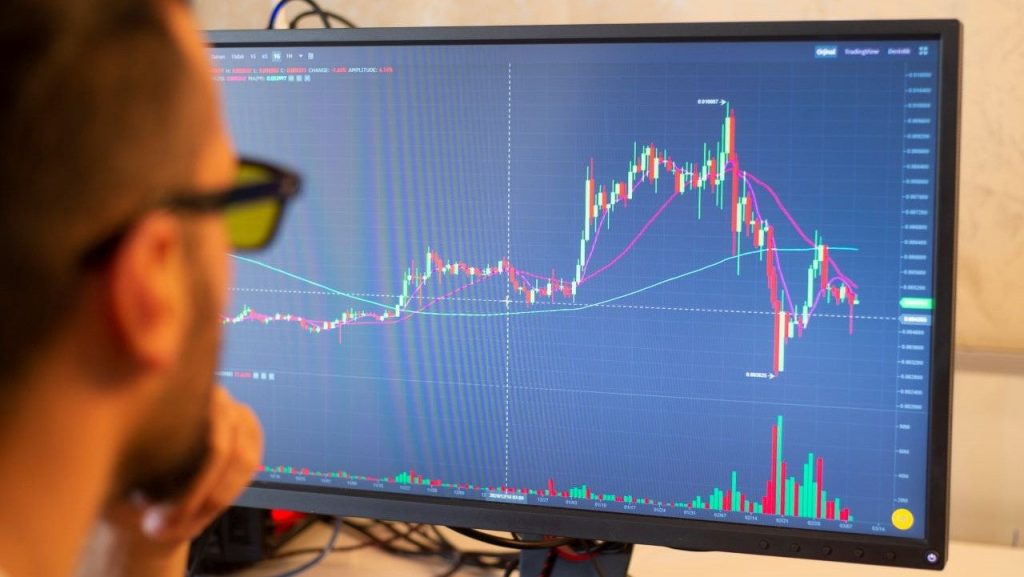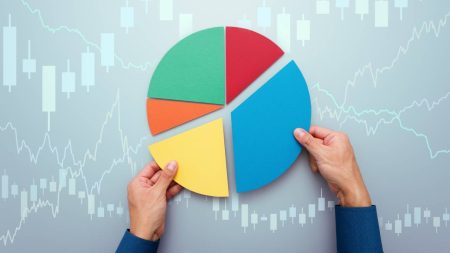Stock prices can move around a lot. Reading about the price swings and the day’s news often makes the volatility seem reasonable and other times it just adds to the confusion.
Electric car maker Tesla, a widely followed and fairly well understood company, has had a 52-week high that is more than double its 52-week low, like many stocks. Swings like that aren’t all that uncommon these days for large companies whose underlying value is usually changing at a much lower rate.
So what’s going on? The answer often depends on the time frame you’re looking at. Stock prices are affected by short-term and long-term factors, both of which are at play at the same time.
Short-term factors that move stock prices
Legendary Wall Street analyst and mentor to Warren Buffett, Benjamin Graham, once said that in the short run the market is a voting machine, and in the long run it is a weighing machine.
That means that over short periods of time — a day, a month or even a year — stock prices can move for just about any reason at all. The action in GameStop stock over the last few years is a prime example.
Let’s look at some of the most common drivers of stock prices over the short term.
1. Economic factors
One area that has a big influence on stock prices is data related to the overall economy. Whether the economy is growing faster than expected or slower can send stocks higher or lower. Concerns about recessions, or economic slowdowns, can also send shares tumbling as traders worry about their negative impacts on corporate earnings.
Closely related to the broader economic picture are inflation and interest rates. A growing economy can lead to higher inflation and ultimately higher interest rates, both of which are healthy for stocks in moderation. But overly strong growth can lead to too much inflation and too-high rates, spooking investors who are worried about how rates may affect financial assets.
Why? Investors discount the future profit streams of companies, factoring in inflation and interest rates, to determine the value of these businesses. All else equal, higher interest rates reduce the current value of a company’s future cash flow, pushing its stock price lower. Conversely, lower interest rates make future cash flows more valuable, often leading to higher stock prices.
In 2020, as the global pandemic was beginning to take hold, markets sold off sharply due to fears about the impact on the economy. However, the Federal Reserve sharply cut rates to buoy financial markets, which then went on a solid run higher. More recently, rising inflation has unnerved markets and caused a long string of interest rate hikes by the Federal Reserve starting in March 2022. The stock market fell for most of that year, as investors factored in those higher rates.
2. Political news
Election outcomes, legislative uncertainty and military conflicts can also impact stock prices in the short term. For example, stocks were volatile around the 2016 and 2020 U.S. presidential elections as investors waited to see which administration would be in charge for the next four years. In early 2022, stocks fell following Russia’s invasion of Ukraine, which caused energy prices to spike further.
But often, the reaction of markets isn’t obvious and traders can quickly shift their attention to a new topic of concern or excitement. A stock may quickly soar but then soon fall back to where it was trading before the news broke, creating a windfall for day traders who enter and exit the stock in hours or days.
3. Technical reasons
Short-term traders often rely on technical analysis to make their trading decisions. This analysis uses recent price movements and chart patterns to predict a stock’s future direction. Technical analysis can influence a stock’s price over the short term, but ultimately a stock’s value will come from the long-term earnings power of the business.
All these drivers fluctuate and are very difficult, if not impossible, to predict. They can make people fearful or enthusiastic — and when people are emotional, they often want to sell stocks or shift from one sector to another, hoping to anticipate where stocks are headed next. All this moving around is part of what causes stock prices to fluctuate so much in the short term. And active trading is generally not advantageous to investors.
Long-term factors that move stock prices
So if the market is a weighing machine in the long term, what exactly is it weighing? Profits and cash flow available to shareholders. The value of a business is calculated by taking the amount of cash it will generate for its owners over its life, discounted back to the present using an appropriate interest rate.
Over the long term, the earnings power of a business will drive its stock price, for better or worse. Your return as an investor can be broken down into three parts.
1. Earnings growth
A key contributor to your return is the company’s profit growth. This will be driven by the growth rate of the overall economy as well as the circumstances of the specific business.
Some businesses, such as online retail, have benefited from massive shifts in the way people shop, creating long runways for growth. Others, such as traditional brick-and-mortar retailers are challenged by the changing competitive landscape and may struggle to grow or even maintain their earnings.
Earnings for the S&P 500 – a stock index representing about 500 companies – are expected to increase about 11 percent in 2024, according to Factset estimates, while 2025 growth is expected to be even stronger at 14 percent.
2. Dividends
Dividends are a way for the company to share its profits with investors. Mature companies tend to share more of their earnings with shareholders in the form of dividends or share repurchases because they aren’t able to deploy that cash themselves at attractive rates of return.
Some companies don’t pay dividends at all, and that isn’t necessarily a bad thing. Businesses with growth potential and strong reinvestment opportunities need to invest heavily in their business to realize that growth and therefore don’t generally return cash to shareholders.
A company’s dividend yield can be calculated by taking the annual dividend per share and dividing by the current stock price. Today, an S&P 500 index fund pays a dividend yield of about 1.3 percent. (Here are some of the best dividend ETFs to consider adding to your portfolio).
3. Change in valuation
Valuation is one of the more difficult variables to predict because it involves the market’s perception of future growth and interest rates. One common valuation metric is the P/E multiple, which is calculated by taking the stock price divided by annual earnings per share.
Companies with high growth rates typically sell for higher valuation multiples.
Investors often determine what level of return they need on an investment, called a discount rate. Investors use this discount rate to calculate the present value of an investment’s future cash flows. Higher discount rates lower the valuation investors are willing to pay, and vice versa. The discount rate can be influenced by an investment’s risk, interest rates and the return available from other investments.
For example, an investor who demands a 12 percent return on an investment is willing to pay less for the same asset than an investor who requires only an 8 percent return. If investors are willing to accept a lower return, then they will push stock prices and valuations higher.
The change in valuation can have a big impact on investors’ returns over time. Paying a high multiple initially can wipe out the return from dividends and earnings growth if the valuation multiple meaningfully compresses over time.
Bottom line
Stock prices can move for any number of reasons over the short term. Political issues, economic concerns, earnings disappointments and countless other reasons can send stocks lower or higher. But over the long term, stock prices will be driven by just a handful of fundamental factors such as earnings growth and changes in valuation.
Be careful to avoid overvalued stocks that might soon be headed for a fall and keep these long-term return drivers in mind amid the market’s ebbs and flows.
Editorial Disclaimer: All investors are advised to conduct their own independent research into investment strategies before making an investment decision. In addition, investors are advised that past investment product performance is no guarantee of future price appreciation.
Read the full article here
















